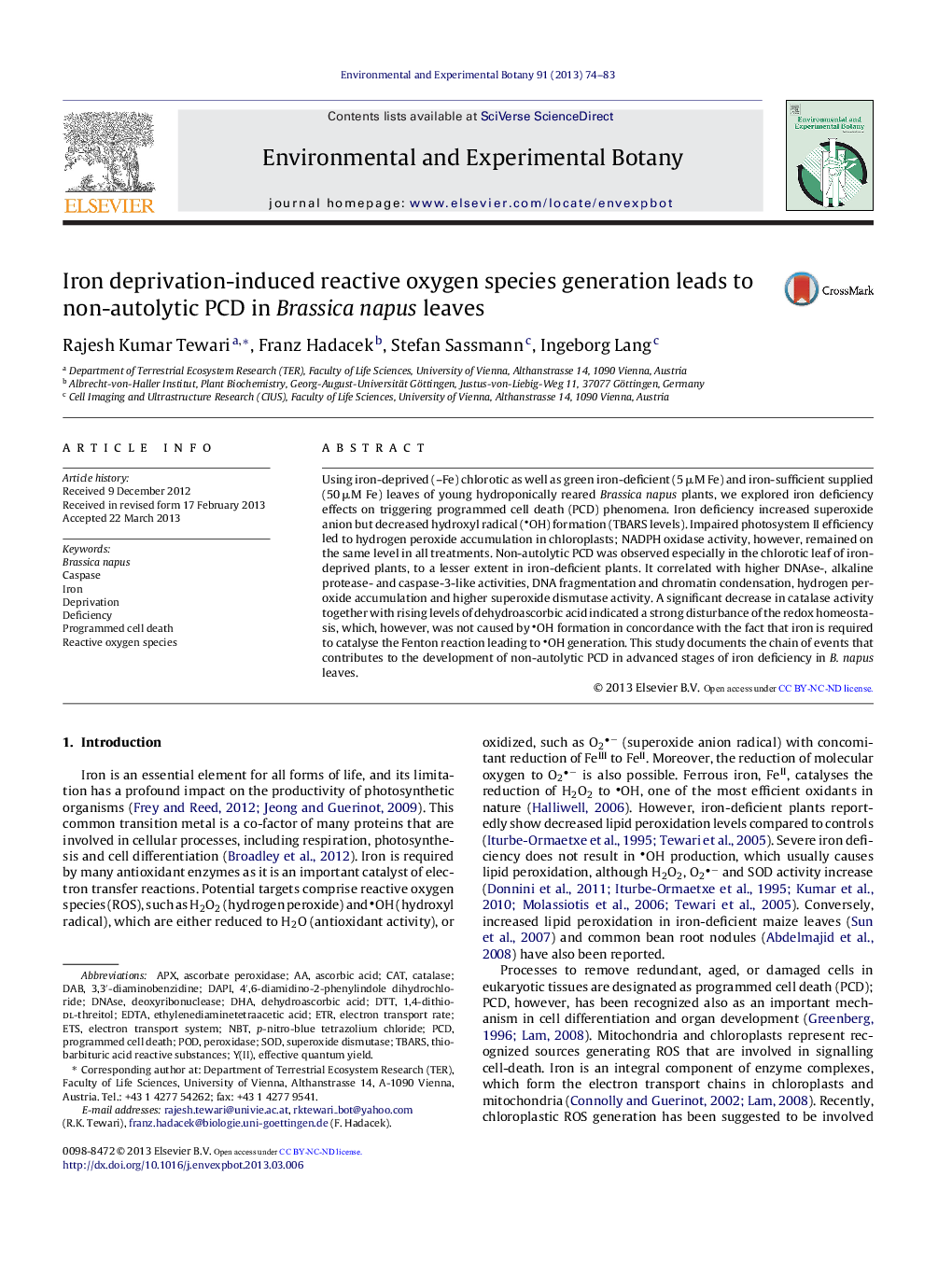| Article ID | Journal | Published Year | Pages | File Type |
|---|---|---|---|---|
| 6388965 | Environmental and Experimental Botany | 2013 | 10 Pages |
â¢Study focuses on iron deprivation induced ROS generation and PCD in rapeseed leaves.â¢Iron deprivation induced superoxide radical and H2O2 generation in chlorotic leaves.â¢Iron deprivation enhanced DNAse, protease and caspase-3 activities.â¢Iron deprivation induced chromatin condensation and DNA fragmentation.
Using iron-deprived (-Fe) chlorotic as well as green iron-deficient (5 μM Fe) and iron-sufficient supplied (50 μM Fe) leaves of young hydroponically reared Brassica napus plants, we explored iron deficiency effects on triggering programmed cell death (PCD) phenomena. Iron deficiency increased superoxide anion but decreased hydroxyl radical (OH) formation (TBARS levels). Impaired photosystem II efficiency led to hydrogen peroxide accumulation in chloroplasts; NADPH oxidase activity, however, remained on the same level in all treatments. Non-autolytic PCD was observed especially in the chlorotic leaf of iron-deprived plants, to a lesser extent in iron-deficient plants. It correlated with higher DNAse-, alkaline protease- and caspase-3-like activities, DNA fragmentation and chromatin condensation, hydrogen peroxide accumulation and higher superoxide dismutase activity. A significant decrease in catalase activity together with rising levels of dehydroascorbic acid indicated a strong disturbance of the redox homeostasis, which, however, was not caused by OH formation in concordance with the fact that iron is required to catalyse the Fenton reaction leading to OH generation. This study documents the chain of events that contributes to the development of non-autolytic PCD in advanced stages of iron deficiency in B. napus leaves.
